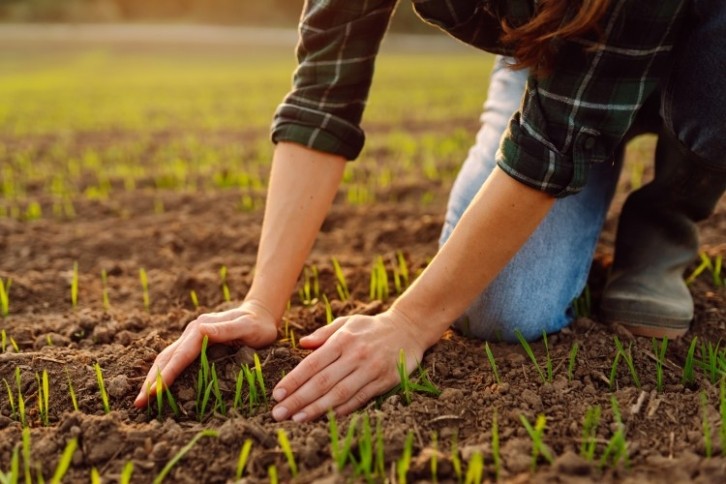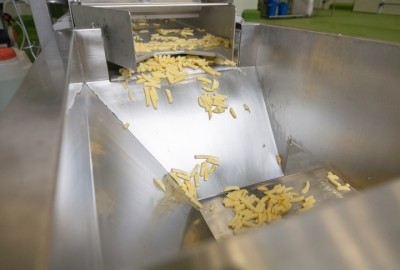US dairies gain a new route into the US carbon markets

Truterra, LLC, the agricultural sustainability arm of US dairy co-operative Land O’Lakes, wants dairy farmers to adopt sustainable practices on the crops they use for dairy feed – and get financially rewarded for their efforts.
This forms part of the company’s new dairy soils carbon programs, which are supported by the likes of Bel Brands US and Dairy Farmers of America.
Sustainable practices include the use of cover crops, strip-till or no-till to improve soil health and increase soil carbon levels.
In addition, Truterra is looking to link up climate-conscious farmers with like-minded food businesses they can supply, thus fostering positive change up and down the value chain.
“Healthy soil is fundamental for profitable, productive, and environmentally sound agricultural systems,” said Jamie Leifker, president of Truterra. “The 2024 Truterra dairy soils carbon programs reward pre-qualified dairy producers who adopt sustainable farming practices on the crops they use for dairy feed – including silage and alfalfa.”
Improving soils can lead to increased yields and reduced input costs; but transacting carbon means more.
Cash for carbon
Carbon captured or sequestered on farm is transacted on so-called carbon markets, where corporations purchase carbon credits in order to offset (compensate for) their own emissions. The practice of offsetting can be problematic, however, as it does not reduce emissions at the source.
For agrifood producers, transacting carbon can provide a monetary incentive to improve soil health (since carbon helps restore degraded soils), which in turn can increase yield and decrease input costs.
Demand for carbon credits is growing, too: according to market analysts, by 2028, the segment will be worth $7bn thanks to a 15-fold increase in demand. The US government has taken notice, and is looking to strengthen regulation to ensure voluntary carbon markets are up to the task of addressing climate change. This includes a recently-announced USDA plan to lower barriers to market participation and enable farmers, ranchers, and private forest landowners to participate in voluntary carbon markets by helping to identify high-integrity protocols for carbon credit generation that are designed to ensure consistency, effectiveness, efficiency, and transparency (more on this here).
What’s in it for dairy farmers?
When we last covered Truterra’s carbon program, agrifood producers were being offered monetary incentives for removals: for example, $20 per ton of carbon sequestered through long-term practice changes, or $2 per acre for shorter-term commitments. Leifker told us that Truterra’s carbon program has paid more than $21m to farmers for the sequestration and reduction of over 1.1 million metric tons of carbon in its first three years.
But in earlier editions of that program, fields where biomass was removed were excluded from the eligibility criteria - affecting many feed acres on dairy farms. In the new dairy programs, this limitation has been addressed.
“The great thing about the recent dairy programs,” Leifker said, “is they support exactly this: corn silage and alfalfa as crops, with the biomass being used on-farm as dairy feed.”
Eligibility is open to both new and long-term practice adopters, and participants are eligible via invitation through sponsoring companies – including Land O’Lakes, Bel Brands and Dairy Farmers of America (DFA).
There are also two other programs, as Leifker explained: “The Truterra Financial Assistance program supports eligible farmers’ conversion to strip/no-till and/or the addition of cover crops. The program provides financial incentives up to 500 acres per farmer for first-time implementation on those fields for crop year 2025, funded under the USDA Partnerships for Climate Smart Commodities grant. It is available to farmers in all US states except Alaska, Hawaii and New Mexico. We were excited to see that, in about a day, this program reached enrollment cap at 115k acres.
“The Field Data Management Program rewards eligible farmers for providing field management data on their 2024 corn or soybean crop, while offering supply shed insights to sponsors. It provides a critical entry point for farmers at the start of their sustainability journeys. We selected corn and soybean as eligible crops for the Field Data Management Program because they both have incredible benefits within the agricultural system. The program is currently available to eligible farmers in select counties in Iowa, Wisconsin, Illinois, Missouri, Kansas, Nebraska, Oklahoma, South Dakota and Minnesota.”
Pairing farmers with food firms
In addition to paving the way for dairy farmers to participate in the carbon markets, Truterra can also link producers with food and beverage companies looking for suppliers that are actively reducing on-farm emissions. “We are focused on pairing farmers seeking to adopt climate-smart practices with companies looking to fulfil their environmental commitments,” Leifker said.
“We are basically ‘matchmakers’ between farmers and climate-conscious food and ag companies looking to increase sustainability in their supply chains.”
“What we have successfully done is help farmers navigate the risk by getting trusted advisers engaged, because agronomy is local, not regional or national.
“When it comes to working with farmers, Truterra's approach is to work with and through ag retailers, who are farmers' trusted advisor, to understand a holistic picture of what changes can be made to reduce overall farm emissions.”
He concluded: “Supporting dairy farmers in their efforts to be more sustainable and reduce the environmental impacts will not only improve the long-term soil health on their farms and the overall efficiency of the operations, but it will in turn provide food businesses with more sustainably sourced products. As companies seek to reduce their carbon footprint, farmers hold the keys.”














